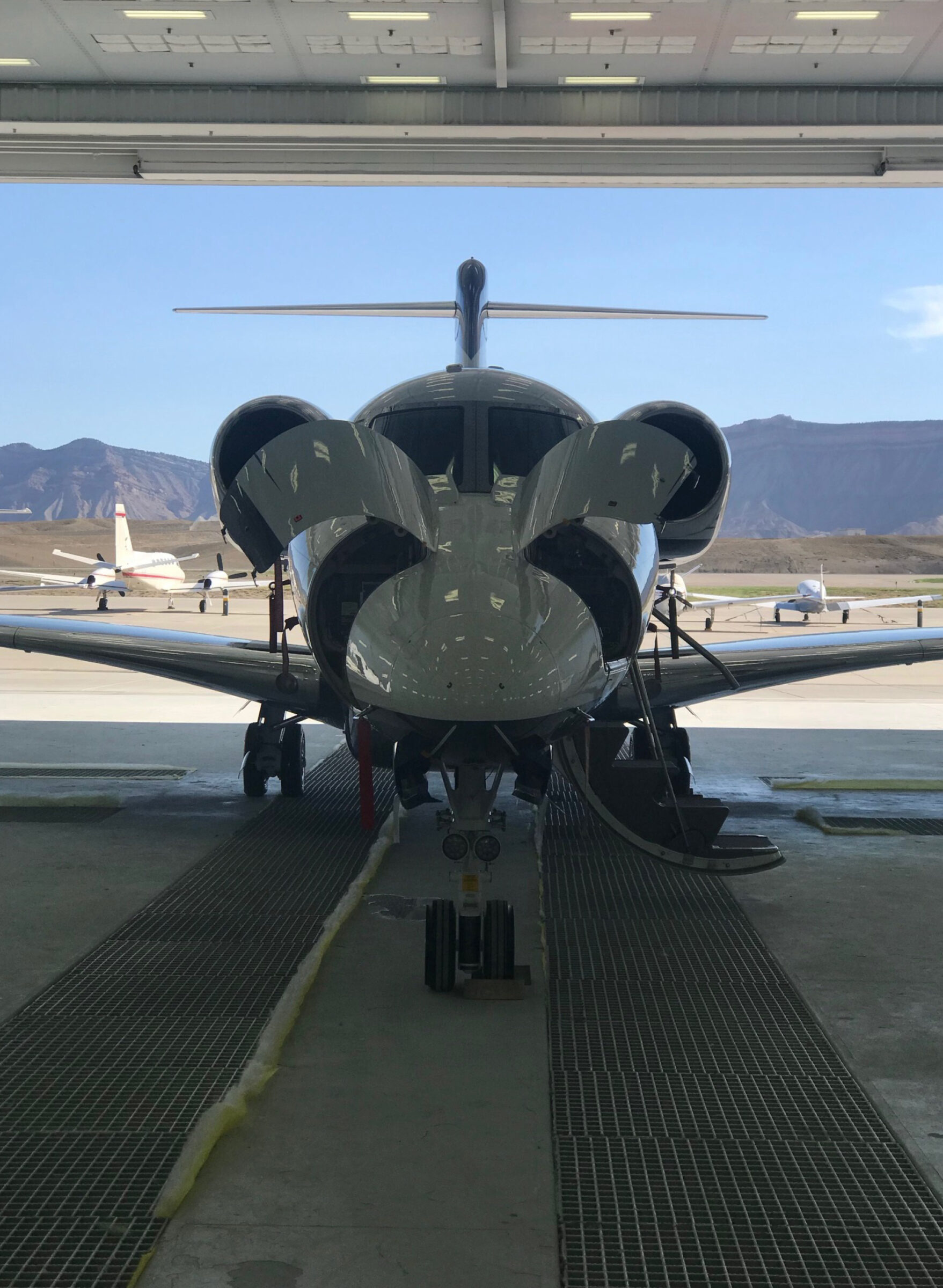What do a $5.3 billion annual payroll, more than 240,000 direct and indirect jobs supported, and a roster of over 1,000 companies and suppliers mean for Colorado’s aerospace industry?
It means they’re doing it right.
Colorado found its roots in aerospace when the U.S. Air Force established multiple critical space operations in the state. Now, the state is home to the U.S. Space Command, U.S. Army Space and Missile Defense Command, U.S. Army Forces Strategic Command, North American Aerospace Defense Command and U.S. Northern Command.
The state’s expertise and assets required for military aerospace operations naturally drew the attention of the National Aeronautics and Space Administration (NASA).
While there is not an official space station for NASA in the state, the agency utilizes the state’s aerospace contractors on leading aerospace projects, has awarded several Colorado companies NASA contracts to develop private space stations and provides extensive funding for aerospace research and education at state institutions.
Small companies and fresh talent moved in to offer materials, skills and support, emerging as a collaborative ecosystem to support the influx of startups. Currently, the state remains one of the top U.S. states for space entrepreneurship. As of 2021, over 60% of Colorado’s aerospace companies have 10 employees or fewer.
Fast forward to today, when those same companies work alongside nine of the nation’s leading aerospace companies including Boeing, Lockheed Martin, Northrop Grumman and Raytheon Technologies.
For over a decade the sector has experienced tremendous employment growth, according to data from the Colorado Space Coalition. Within the past five years aerospace employment grew by 30%, almost 12% higher than the rest of the nation.
Of the top five aerospace states in the U.S., Colorado holds the highest percentage of residents with a bachelor’s degree or higher at 42.7%, followed by Maryland, California, Florida and Arizona. The state ranks second highest on the state science and technology index, as well as second highest in the U.S. for its concentration of trained engineers.
Colorado has the resources and expertise to remain one of the nation’s leading aerospace hubs. Proving that here, the sky will never be the limit.
Futuristic Findings
The University of Colorado Boulder (UCB) receives the most NASA funding of any public institution in the country.
“That’s not a coincidence, right?” says UCB Professor of Aerospace Engineering Sciences Iain Boyd. “It’s because of the military activities, because of industry support. They need people who are trained and educated in all aspects that are important to what these other people are doing.”
Professor Boyd additionally leads NASA’s $15 million Advanced Computational Center for Entry System Simulation (ACCESS) institute out of UCB, alongside four U.S. institutions and global collaborators in England, Italy and Portugal. The project was announced in March 2021 and will continue to run until 2026.
For Boyd, NASA’s interest and support of aerospace research at the university is just one example of the industry’s role in advancing knowledge as well as training the next generation of talent.
As focus shifts to exploring planets like Mars in our solar system, research on thermal protection systems is vital to entry, landing and descent of spacecrafts and various technologies. The research carried out by Boyd and his team works toward the goal of advancing usage of computer simulations to design and ensure safety of the entry systems required for NASA space exploration missions.
“[NASA] is interested in the research we are doing, but they’re also looking at this as a way to develop very high-level expertise that is relevant to their challenges. Whether students who’ve been working in ACCESS end up working for NASA or they go to work in the industry, they’re contributing back to the community,” says Boyd.
In 2022, UCB received a record-breaking $658 million in funding for aerospace, climate and bioscience research. Notably, $14 million came from NASA to fund the DYNamics Atmosphere GLObal-Connection and the Sun Coronal Ejection Tracker missions to measure gravity waves in Earth’s upper atmosphere. Additionally, a $7.5 million grant came from the U.S. Department of Defense for hypersonic flight research.
“The companies and government agencies are interested in what we are doing. Yes, of course for the research,” says Boyd. “But I would say at least as much for the development of people, right? The human capital that comes out of our activities.”
With so many major league aerospace companies in the state, it’s clear a heavy focus is placed on preparing talent and then keeping those skills and knowledge in Colorado. The university’s nationally top-ranked aerospace program makes recruitment efforts here determined and aggressive, Boyd tells me. A perfect way for students to network.
“The large companies engage in a variety of ways. There are job fairs, they fund design projects, research projects and they serve on advisory boards. The community we have here really does try to work together and these companies are eager for a talented workforce.”
Cleared for Growth
In March 2022, West Star Aviation announced a $16 million expansion to their Grand Junction, Colorado, location to support large aircraft capabilities. The facility will grow to approximately 379,000 sq. ft., adding a new 40,000-sq.-ft. hangar and 35,000 sq. ft. of workshop and office space. The expansion will be complete in late 2023, adding 84 new technicians and 100 new jobs upon completion.
The company received $1.7 million in incentives from the Colorado Economic Development Commission and Grand Junction Economic Partnership and Industrial Development for this expansion. Receiving a Job Growth Incentive Tax Credit and Strategic Fund Project package and a local funding match, West Star has been able to streamline the construction process and fill roles at a greater rate.
“Our experience within the state of Colorado has been outstanding,” says Jim Swehla, co-founder of West Star Aviation. “We’ve been very well accepted and have had a great experience on the city, county, state and federal level.”
On the search for an ideal western U.S. location to expand their domestic footprint, West Star Aviation’s founders were excited about a Colorado facility newly for sale. Having served the central U.S. at their East Alton, Illinois, location for two years, West Star was ready to start expansion on the east and west coasts, but with strategy in mind.
“Colorado is a leading aerospace hub which is made up of many areas of aviation including space exploration, research labs, military, airline, cargo, corporate and private aviation,” says Swehla.
In the aerospace industry, facilities require an extensive list of resources necessary to properly service and maintain aircraft. For Swehla, Colorado had it all and at the perfect time.
In addition to expert technicians and support staff, equipment and infrastructure, a substantial amount of space was a key factor in decision-making. Because aircraft owners fly into West Star facilities to receive services, having strategic locations around the nation was essential to easing travel distance for customers.
“Colorado is very attractive in many aspects — quality of life, outdoor activities, cost of living, weather,” says Swehla. “Our primary reason in selecting Colorado was based on geographic location in the western U.S. and the availability of an experienced workforce.”
In 2004, West Star Aviation opened an over 300,000-sq.-ft. maintenance, repair and overhaul (MRO) facility in Mesa County, Colorado, located adjacent to the Grand Junction Regional Airport. Later the company installed a satellite facility in Denver and created mobile repair teams which support neighboring cities Aspen, Vail, Steamboat, Montrose, Telluride and Colorado Springs, among others.
“West Star Aviation is a major contributor in the aviation sector,” says Swehla. “We are a leading MRO that provides service and support for the corporate and private aviation sector of Colorado.”
With nearly a decade of experience in Colorado’s aerospace industry and as one of Mesa County’s largest private employers, the company has become a staple in the community. The strategic decision to locate in the state years ago provided West Star the perfect runway for their business to reach new heights.

